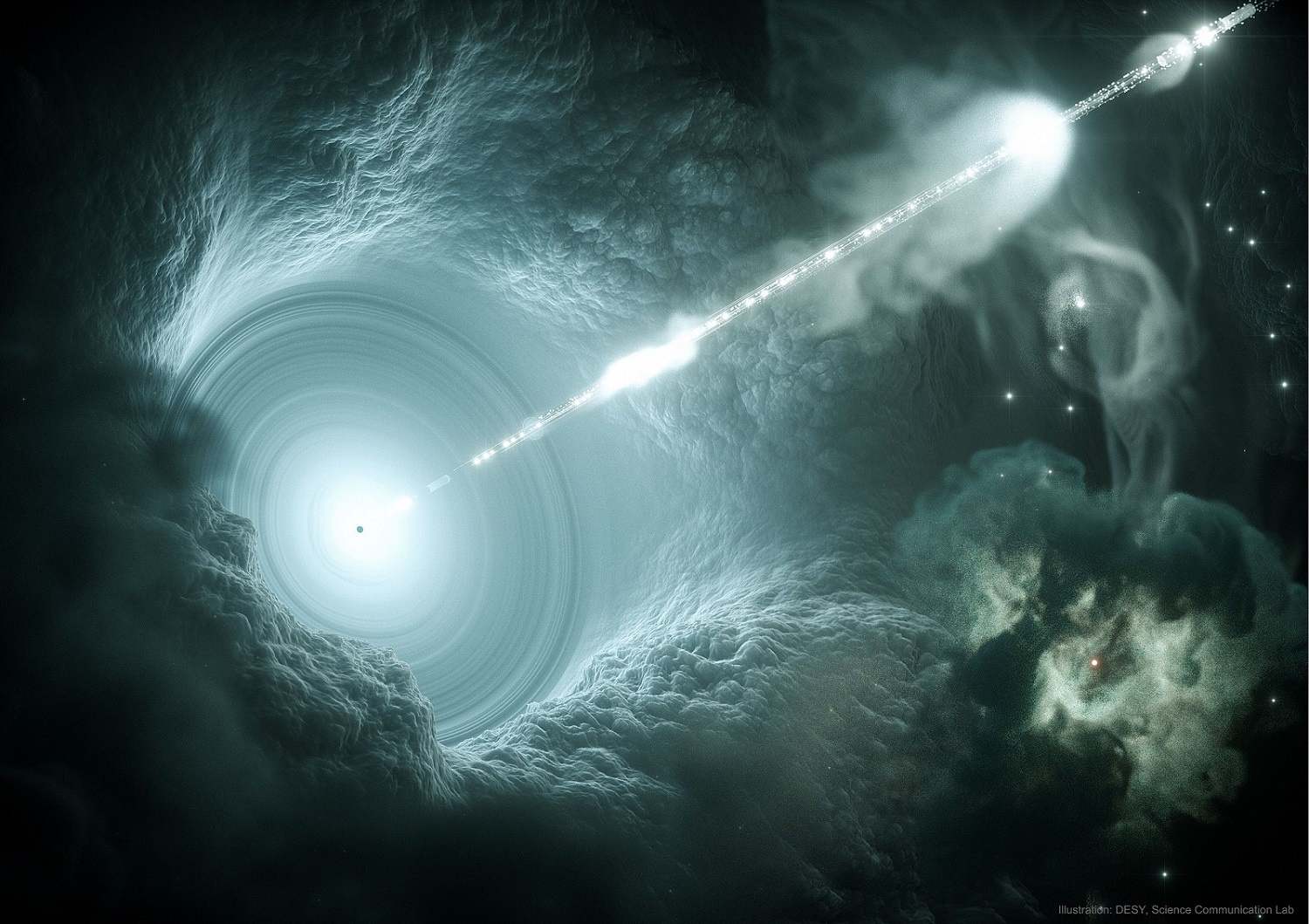Giant black holes can launch jets that extend for tens of thousand of light-years, blasting clean out of their host galaxies. These jets can last for tens of millions of years. Recently astronomers have spotted the first-ever jet in the process of forming, creating a cavity in the span of only twenty years.
Almost every galaxy is thought to host a giant black hole in its center. These black holes are so big that they get a new name: supermassive black holes. But not only do they consume anything that happens to wander too closely, they also develop massive disks of material swirling around them.
These accretion disks become incredibly bright, as tons upon tons of gas and dust try to squeeze down towards the black hole. That inward motion increases the densities, and friction within the material causes the temperatures to skyrocket.
As the gas and dust swirls in, it flattens to form a razor-thin disk, spinning at a healthy fraction of the speed of light. That disk generates extremely strong electric and magnetic fields, which causes some of the gas to spin around the black hole, eventually skimming the surface and blasting out in the form of twin jets.
These jets cause havoc. They can disrupt the formation of stars, blow holes in galaxies, and even escape out into intergalactic space.
For decades astronomers have been observing these jets using radio telescopes: the jets themselves are wrapped in strong magnetic fields, like a straw around the soda you’re slurping up, which produce extremely bright radio emissions.
And recently astronomers at the U.S. Naval Research Laboratory used the Karl G. Jansky Very Large Array to witness something remarkable: the birth of these jet systems.

They accomplished this by running a survey of the radio sky, called – appropriately enough – the Very Large Array Sky Survey (VLASS). They then looked for bright sources that did not exist in older surveys. By comparing the two surveys, they could spot anything new that’s cropped up in the past couple decades.
The astronomers found multiple examples of jets blasting out of galaxies where twenty years ago they had been silent. This is the first time that astronomers have caught the formation of jets in the act. Further observations will reveal how those newborn jets shape and sculpt the surrounding galaxies, and ultimately impact their evolution.


That … was an impressive graphics. Kudos to the artist!
Cool to see that these systems are so dynamic. No longer mere “islands in the sky” but citizens of the galaxy,
“… citizens of the universe” obviously – I pulled the book title raw from memory instead of what I intended to write. Working memory is nice – when it works.